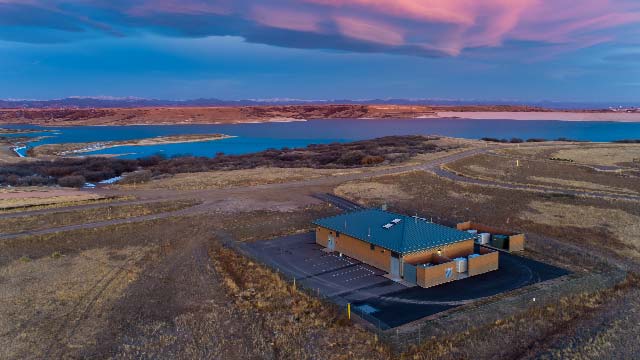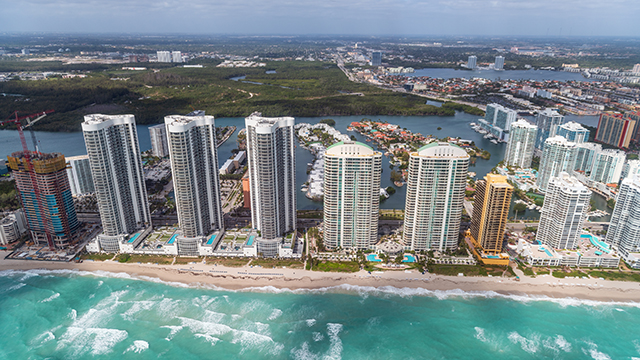The taps are flowing more freely in Cape Town, one of the world's premier tourist destinations and a cultural center of South Africa. In 2018, Cape Town residents stared down "Day Zero," the moment when the water system – jeopardized by the combination of population growth, drought cycles, aging infrastructure and deferred system improvements – was predicted to literally run dry.
Fortunately, citizens rallied by heeding the conservation calls, and the skies opened. A historic crisis was averted for its more than 3 million residents. But the lessons lingers on: Government and water industry leaders the world over are reconsidering how climate impacts and deferred maintenance threaten the resilience of our supply.
From scarcity in South Africa to flood control in the United States, many believe that a smarter infrastructure, with data at its core, will be key to overcoming the many threats to our water supply. In its various forms and monikers – from "Digital Water" to "Smart Water" to the "Internet of Water" – data has woven itself into the central fabric of our water economy, increasingly driving sustainability, resilience, asset management (AM) and planning. Just as industries have embraced the Internet of Things to connect technologies and add value to our daily lives, the Internet of Water promises a similar transformation for our water systems.
From precise reads of consumption and customer engagement to leak detection and climate change, a culture of data science is lighting new paths to enriching our supply. Responses to Black & Veatch's 2019 Strategic Directions: Water Report survey about data use clearly reflect its role in utility operation.

Another statistic from the 2019 Strategic Directions: Water Report illustrates an unfortunate symptom of this new era's emphasis on data creation: What to do with it all?
In many ways, we've put data in a kind of information lockup. Just 5 percent of respondents to our annual survey of water industry leaders in North America said their organizations had implemented a robust, fully integrated approach to data management. Nearly 60 percent said their data efforts were getting stronger but weren't fully integrated. Another third of respondents said their organization's data remained siloed, while more than 4 percent of respondents said they collect little to no data, and whatever digital information they were capturing wasn't being leveraged for actionable information.
Silos of data in computer systems don't always talk to each other, and they miss a key opportunity to present more holistic views of the health of our systems. Digital water – through next-generation collection devices and predictive analytics – has ushered in the ability to funnel disparate data into a single, meaningful snapshot of the entire water ecosystem. This "single version of the truth" allows a user to gain insight on the connectivity and synergies within a system to drive operational efficiency, performance predictability, maintenance planning and optimize workforce needs. Data has the power to understand, manage and guide us to reliability and optimization.
Without a strategic and integrated plan, fragmented data streams feed what essentially are data "islands" that don't communicate, thus inhibiting a beneficial, broad system snapshot. For forward-looking organizations, the move to become "insights driven" puts a premium on data collection and analytics to drive integrated decision-making. Some organizations have even appointed "chief data officers" to enable inclusive, data-driven planning.

That kind of approach is at work in the UK, where leaders of Yorkshire Water sought an asset management program to satisfy the often-competing demands of customer satisfaction and regulatory compliance. under a comprehensive strategy that capitalizes on technology and predictive data analytics, professionals carrying tablets with sophisticated documentation software are enabling live asset survey findings, and piping and instrumentation diagram updates, to be uploaded to dynamic asset database.
The Yorkshire project, spotlighted on page 17 in this report, features operations and maintenance teams in the field that are empowered to access a condition-based maintenance program which guides their activities, and to record and upload condition reports, in real time. the utility's work with Black & Veatch is central to enabling the implementation of an effective predictive maintenance regime covering 695 water and wastewater treatment facilities and 83,000 kilometers (about 51,570 miles) of water and sewerage pipes. in the first three months of the program alone, they saw a 31 percent decrease in reactive O&M activities and saved more than £47,000 through a single failure mitigation at the site.
In addition to the influence of digital water, our report addresses these additional key issues:
- Data to Validate Investments: Once declared "the world's most valuable resource" by The Economist, data continues to flex increasing muscle in helping many utilities boost operational efficiency and cut costs. In the water sector, our survey finds that data remains underused in helping those utilities forge risk-based strategies for asset-replacement investments. Instead, operators and "tribal knowledge" are largely making decisions where data can provide key insights, support, and justification.
- Water Meets "New Energy": While water and energy are frequently assigned to their own silos, improving only one of those resources while neglecting the other in what's an interdependent system can be counterproductive when pursuing sustainability and security. Opportunities to boost energy efficiency, cut greenhouse gas emissions and capitalizes on new revenue streams differ among wastewater utilities, but there is a commonality: the ability to contain or cut energy and operational costs by embracing modern technology. While data can unlock greater system efficiency and asset management, on-site generation of new energy sources – options such as biogas, hydroelectric and renewables – are maturing and gaining sway, with solar generation a natural option for utilities that largely have access to large spaces and rooftops of public buildings.
- Resilience in the Face of Limits: Arid conditions and frequent drought cycles continue to challenge water supplies across the United States, causing concerns about water security to reverberate throughout the industry. Survey data finds water providers are squarely focused on hardening their systems to withstand both natural events and man-made threats, with 86 percent saying resilience is a crucial priority.
- Stormwater Funding: Our survey finds that while the need for a programmatic approach to stormwater management is at an all-time high, funding remains critically low, underscoring the need for education on how to develop innovative funding alternatives. Community-based partnerships can resolve many of the challenges associated with stormwater management – but understanding and adoption of P3 strategies remain low among municipal leaders.
- Resilience and Too Much Water: The troubling images of a giant stretch of the Upper Midwest inundated with flooding offered a reminder of water's destructive power and revisits the need to mediate it along inland rivers and coastal areas prone to storm surges and rising sea levels. As legacy conveyance strategies are put to the test, causing some communities to turn to transformational water infrastructure such as huge tunnels, others are arriving at short-term fixes over long-term resilience.
- Alternative Delivery of Projects: New projects are seeing new approaches to project delivery. Build-outs of pipelines, sewer lines, treatment plants, pump stations, reservoirs and more and increasingly seeing non-traditional delivery methods gaining ground. One such option is the progressive design-build method, in which utilities use contractor qualifications or some pre-defined attributes of best value as their selection criteria and then move through the construction processes in a collaborative way. Our survey found more than half of respondents had employed the strategy.
- Asset Management and Predictive Maintenance: As water utilities work to improve customer service and meet quality and environmental regulatory targets, there is an emerging emphasis on asset management, particularly predictive maintenance. The rate of change is accelerating as artificial intelligence (AI), data analytics tools and smart sensors become less expensive and more widely available, offering water utilities options for addressing aging infrastructure.
- Nutrient Removal: Nutrient runoff from industrial farming, wastewater treatment plants and other sources threaten aquatic life and public health. Aided by new advances in nutrient management technology and a growing interest in nutrient trading, efforts to reduce nutrient levels are evolving as water and wastewater utilities work to improve effluent quality and meet regulatory requirements.
- Energy Planning and Management: Energy is the highest operational cost for a water and wastewater utility. Water is extremely heavy to move through pipes and many treatment processes are energy intensive thus conveyance and treatment requires an enormous amount of power – and money. According to our survey, two-thirds of respondents say energy management is "extremely or very important," while one-quarter prioritized it as "moderately important." How plant operators strategize their approach to power management can have significant effects on revenue and operations.
From inside the fence to behind the meter, the digitization of water is pushing data potential's deeper into our organizations, influencing planning, asset management, customer interaction and operations. Our survey results show more organizations are incorporating digital strategies into their offerings, and the result promises a water ecosystem that is responsive, secure, resilient and abundant. We don't have to settle for merely putting off "Day Zero" for another day. We have the tools to help end the threat altogether.








